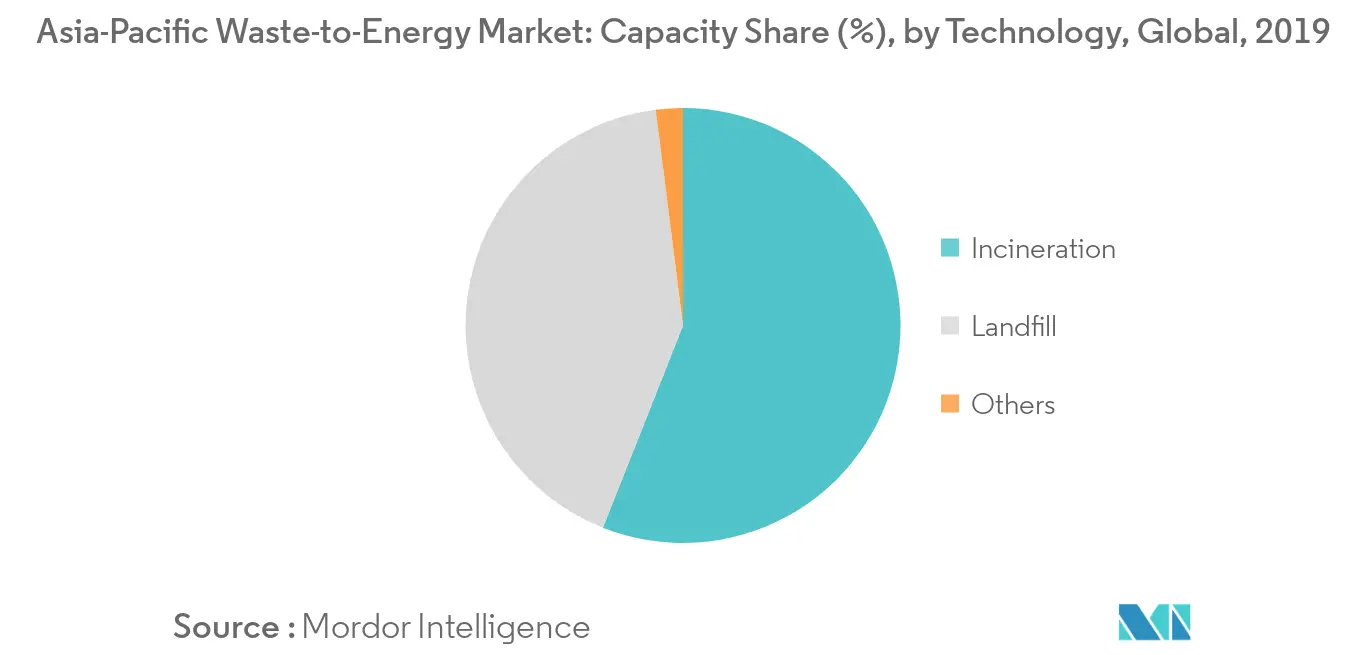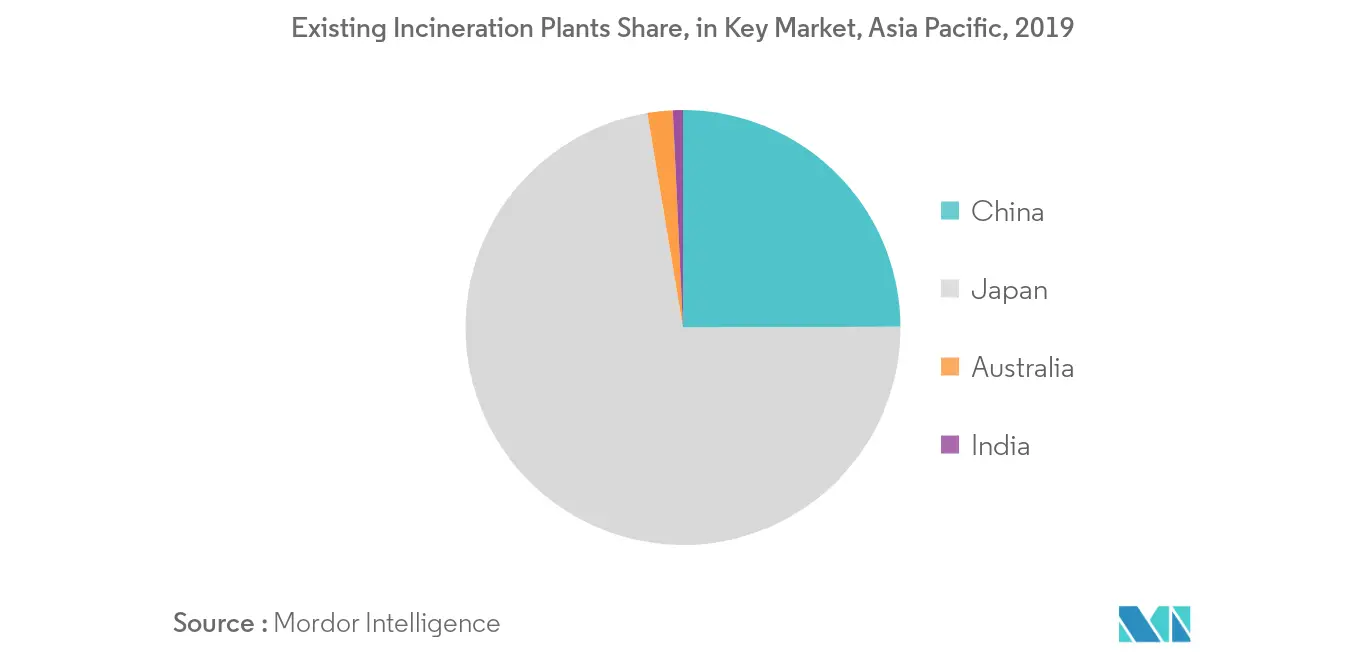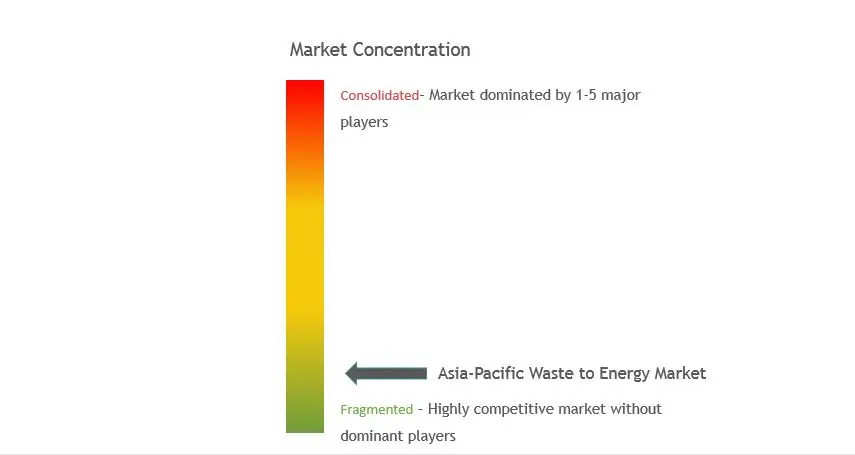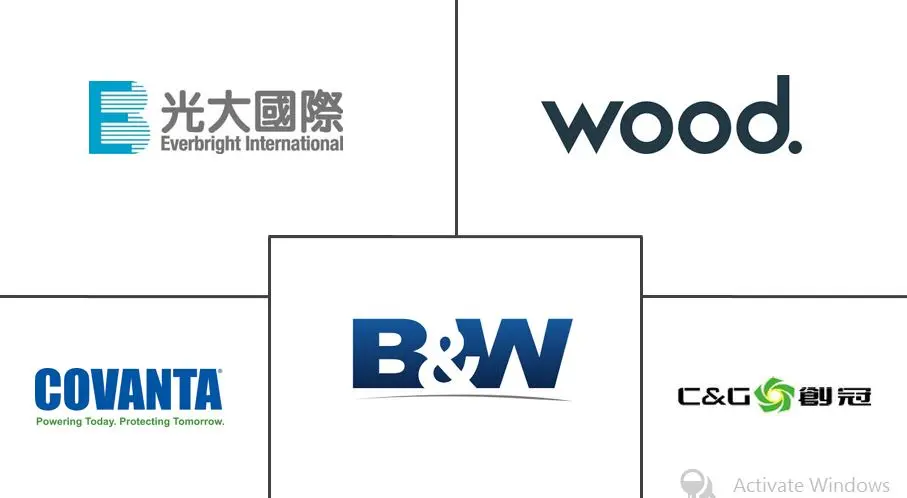
Asia-Pacific Waste-to-Energy Market Analysis by Mordor Intelligence
The Asia-Pacific Waste-to-Energy Market is expected to register a CAGR of greater than 2.5% during the forecast period.
- Incineration is one of the prominent waste to energy technology. During the year 2018, the technology nearly covered almost 40% of the total waste to energy installations in the region.
- Waste generation is overgrowing in the region with the increasing population. By 2050, Asia-Pacific is expected to have around 1.3 billion tonnes of waste. Moreover, daily per capita waste generation in the region is expected to get increase by nearly 40% by 2050. Thus, increasing municipal waste volume and increasing demand for energy in the region is expected to create an opportunity for the waste-to-energy market in the near future.
- China is one of the prominent countries in the WtE market, with Shanghai as the major city that process the highest waste to generate energy for heat and electricity purpose. The country produces an annual amount of over 220 million tons of municipal waste per year.
Asia-Pacific Waste-to-Energy Market Trends and Insights
Incineration as a Prominent Technology
- For an incineration process, waste materials are burned inside a specific chamber by raising the temperature to around 850-1450 degrees Celsius, adding oxygen to have a combustion reaction. A minimum calorific value of the waste is required for self-combustion of the trash.
- During the process, exhaust gases called flue gases are created, which is cleaned up before exiting from the facility. This flue gas contains the heat energy that is utilized to generate electricity or for heating purposes.
- The operation of incineration is more complex than the operation of a sanitary landfill. It requires well developed technical and management skills to set and adjust the parameter for the effective operation of the plant.
- During 2018, there are more than 1500 incineration plants in the Asia-Pacific region. China is one of the prominent country, that has installed the world's largest incineration plant (The Shenzhen East waste-to-energy plant) in 2019. The plant has a capacity of processing 2.7 million tonnes of waste per year and is capable of generating 1.5 billion kilowatt-hours of power per year.

China has a Significant Market
- China is the second-largest producer of municipal waste in the world that initiated waste sorting plans during 2017 and aims to recycle 35% of waste in 46 major cities, including Shanghai, by 2020.
- In China, the number of incineration plants has increased from 74 in 2008 to around 400 in 2018. Beijing is planning to double its incineration capacity, and to burn 54% of the municipal wastes by 2020. Under Chinese President Xi Jinping's plan to tackle pollution, the incineration industry is expected to continue its expansion, in order to replace stinky, polluting, land-intensive garbage dumps. Moreover, with its burgeoning economy producing vast quantities of garbage (increasing 8-10% annually), China is turning to new facilities that burn solid waste to produce electricity.
- As per International Energy Agency (IEA), China has around 7.3 gigawatts of installed waste to energy capacity, with its 339 plants during 2017. The country's waste to energy has grown by 1 GW per year on average from last five years and is expected to continue the growth with rising municipal waste.

Competitive Landscape
The Asia-Pacific waste-to-energy marketis fragmented. The key owners in the market include Wood Group Plc, Babcock & Wilcox Enterprises Inc., C&G Environmental Protection Holdings Ltd., Everbright International Ltd., Covanta Holding Corporation, Green Conversion Systems, Inc., and Hitachi Zosen Corporation, amongst others.
Asia-Pacific Waste-to-Energy Industry Leaders
Wood Group Plc
Babcock & Wilcox Enterprises Inc.
C&G Environmental Protection Holdings Ltd
Everbright International Ltd.
Covanta Holding Corporation
- *Disclaimer: Major Players sorted in no particular order

Asia-Pacific Waste-to-Energy Market Report Scope
The Asia-Pacific waste-to-energy market report include:
| Landfill Gas Collection |
| Incineration |
| Co-Processing |
| Pyrolysis/Gasification |
| Anaerobic Digestion |
| China |
| Japan |
| Australia |
| Rest of Asia-Pacific |
| Technology | Landfill Gas Collection |
| Incineration | |
| Co-Processing | |
| Pyrolysis/Gasification | |
| Anaerobic Digestion | |
| Geography | China |
| Japan | |
| Australia | |
| Rest of Asia-Pacific |
Key Questions Answered in the Report
What is the current Asia-Pacific Waste-to-Energy Market size?
The Asia-Pacific Waste-to-Energy Market is projected to register a CAGR of greater than 2.5% during the forecast period (2025-2030)
Who are the key players in Asia-Pacific Waste-to-Energy Market?
Wood Group Plc, Babcock & Wilcox Enterprises Inc., C&G Environmental Protection Holdings Ltd, Everbright International Ltd. and Covanta Holding Corporation are the major companies operating in the Asia-Pacific Waste-to-Energy Market.
What years does this Asia-Pacific Waste-to-Energy Market cover?
The report covers the Asia-Pacific Waste-to-Energy Market historical market size for years: 2020, 2021, 2022, 2023 and 2024. The report also forecasts the Asia-Pacific Waste-to-Energy Market size for years: 2025, 2026, 2027, 2028, 2029 and 2030.
Page last updated on:
Asia-Pacific Waste-to-Energy Market Report
Statistics for the 2025 Asia-Pacific Waste-to-Energy market share, size and revenue growth rate, created by Mordor Intelligence™ Industry Reports. Asia-Pacific Waste-to-Energy analysis includes a market forecast outlook for 2025 to 2030 and historical overview. Get a sample of this industry analysis as a free report PDF download.



